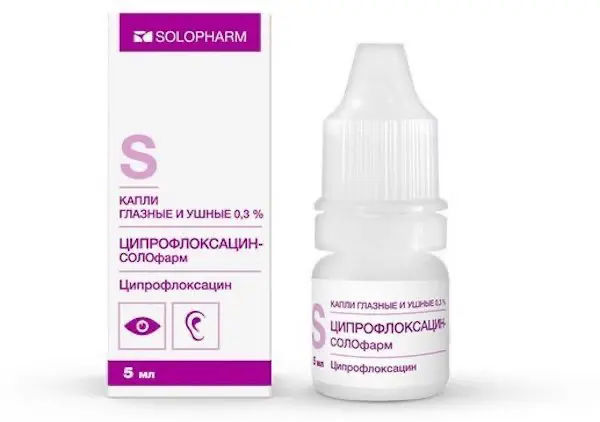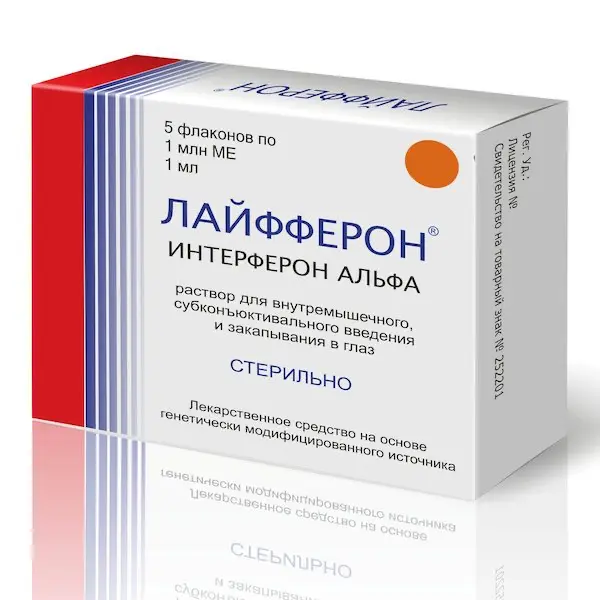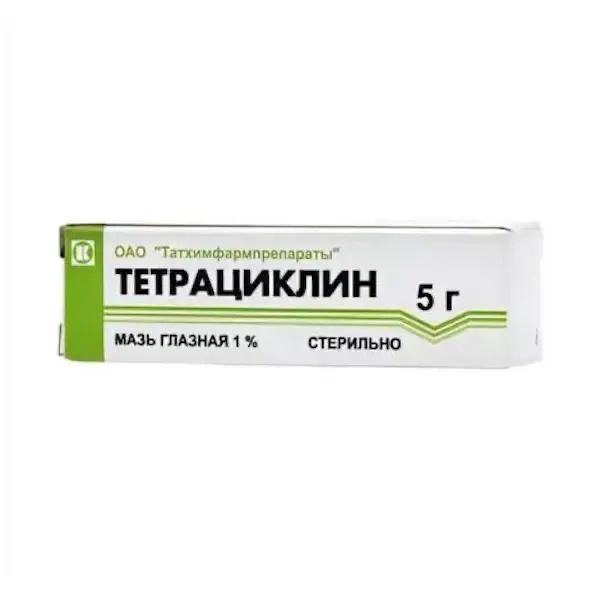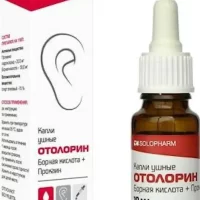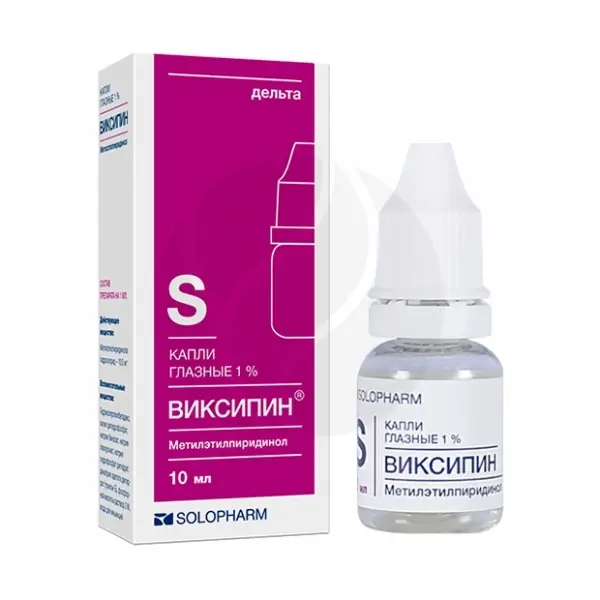Description
Ciprofloxacin eye drops Pharmacodynamics
Ciprofloxacin is a broad spectrum antimicrobial agent, fluoroquinolone derivative, inhibits bacterial DNA-giase (topoisomerases II and IV, responsible for superspiralization process of chromosomal DNA around nuclear RNA, which is necessary for reading genetic information); inhibits DNA synthesis, growth and division of bacteria; causes evident morphological changes (including cell wall and membrane) and rapid death of bacterial cell.
It is bactericidal on Gram-negative organisms during resting and dividing (as it affects not only DNA-giase, but also causes lysis of cell wall), on Gram-positive microorganisms – only during dividing.
Low toxicity for macroorganism cells is explained by the absence of DNA-gyrase in them. Against the background of ciprofloxacin use there is no parallel development of resistance to other antibiotics that do not belong to gyrase inhibitors group, which makes it highly effective against bacteria that are resistant to, for example, aminoglycosides, penicillins, cephalosporins, tetracyclines and many other antibiotics.
Gram-negative aerobic bacteria are sensitive to ciprofloxacin: Enterobacteriaceae (Escherichia coli, Salmonella spp., Shigella spp., Citrobacter spp., Klebsiella spp., Enterobacter spp, Proteus mirabilis, Proteus vulgaris, Serratia marcescens, Hafnia alvei, Edwardsiella tarda, Providencia spp., Morganella morganii, Vibrio spp., Yersinia spp.), other Gram-negative bacteria (Haemophilus spp., Pseudomonas aeruginosa, Moraxella catarrhalis, Aeromonas spp, Pasteurella multocida, Plesiomonas shigeoides, Campylobacter jejuni, Neisseria spp.); some intracellular pathogens (Legionella pneumophila, Brucella spp, Chlamydia trachomatis, Listeria monocytogenes, Mycobacterium tuberculosis, Mycobacterium kansasii, Corynebacterium diphtheria); Gram-positive aerobic bacteria: Staphylococcus spp. (Staphylococcus aureus, Staphylococcus haemolyticus, Staphylococcus hominis, Staphylococcus saprophyticus), Streptococcus spp. (Streptococcus pyogenes, Streptococcus agalactiae).
Most methicillin-resistant staphylococci are also resistant to ciprofloxacin. Sensitivity of Streptococcus pneumoniae, Enterococcus faecalis, Mycobacterium avium (located intracellularly) is moderate (high concentrations are required for their suppression).
Bacteroides fragilis, Pseudomonas cepacia, Pseudomonas maltophilia, Ureaplasma urealyticum, Clostridium difficile, Nocardia asteroides are resistant to the drug. Ineffective against Treponema pallidum.
Resistance develops very slowly because, on the one hand, after the action of ciprofloxacin there are almost no persistent microorganisms, and on the other hand, bacterial cells have no enzymes that inactivate it.
Indications
Treatment of corneal ulcers and infections of the eyeball anterior segment and its appendages, caused by bacteria sensitive to ciprofloxacin in adults, newborns (from 0 to 27 days), infants and children (from 28 to 23 months), children (from 2 to 11 years) and teenagers (from 12 to 18 years).
Contraindications
Hypersensitivity to the active substance and any of the excipients. Hypersensitivity to quinolones.
Caution
Caution should be exercised when prescribing the drug in patients with cerebral atherosclerosis, cerebral blood circulation disorder, convulsive syndrome due to the risk of adverse reactions of the central nervous system.
Directions for use and dosages
- Ciprofloxacin eye drops is used topically. The drug should not be injected subconjunctivally or into the anterior chamber of the eye. The drug should be instilled into corneal ulcers observing the following intervals between instillations (including at night): 2 drops each 15 minutes during the first 6 hours on the first day, then 2 drops each 30 minutes for the rest of the day. On the second day of therapy – 2 drops every hour. From the third to the 14th day of therapy – 2 drops every 4 hours. If it is necessary to continue therapy longer than 14 days, dosage regimen should be chosen by a doctor. In diseases of the anterior segment of the eyeball the drug shall be instilled as follows: 1 or 2 drops in the affected eye (eyes) 4 times a day. In case of severe infections the dosage regimen for the first 2 days may include instillation of the drug in 1 or 2 drops every 2 hours during the waking period. Duration of therapy with the drug according to the stated indications shall not exceed 21 days.
- Administration for children
- Regimen of dosage during therapy in children over 1 year of age corresponds to that of adults. Efficacy and safety of ciprofloxacin in children aged 0-12 years old has been confirmed in clinical studies with 230 children. No serious adverse events have been observed in this group of patients.
- Use in renal and hepatic impairment
- There are no data on the use of Ciprofloxacin eye drops in patients with concomitant hepatic and renal diseases.
- When using the drug to reduce the risk of systemic adverse reactions, light finger pressure on the area of the inner corner of the eye in the projection of the lacrimal sac is recommended for 1-2 minutes after instillation of the drug.

